KIC 8462852 Reference Star Analysis,
Hereford Arizona Observatory Observations
Bruce L. Gary, 2017.09.010, 01 UT
lntroduction
In 2015 I performed all-sky photometry calibrations of 25 nearby
stars for later use as reference stars for Tabby Star calibration.
Since then I have excluded use of 10 of them due to either extreme
redness, variability or a high 4-month trend. The remaining 15
stars are stable at the level of ~ 3 mmag over the 4-month
interval 2017 May to Sep.
It is obvious that the fraction of stars that are suitable for use
as reference will depend on the goal for the target star's amount
of variation. For example, a star that undergoes 1.0 mag
variations during the course of a few hours (e.g., a cataclysmic variable) can be
monitored adequately by using a reference star that undergoes much
smaller variations on the same time scale, such as 0.010
variability (1 %) with day or longer periods. AAVSO observers
typically use one reference star and one check star, and when the
check star (also calibrated using the same reference star) appears
constant the target star's variations are accepted as valid.
Tabby's Star has significantly different requirements because our
goal is to avoid systematic errors of 0.001 magnitude during
several months of observations! Note that 0.001 mag equates to
0.1%, and our goal is to characterize the shape of fades that are
only 0.010 mag deep (normalized flux depth of 1.0 %).
We must confront the rare question: How many stars are
well-behaved at the 1 mmag level over timescales of several
months?
My tentative answer is that ~ 60 % of stars are well-behaved at
the 3 mmag level over several month timescales. In other words,
the common practice of using one reference star and one check star
(used by most AAVSO observers) will produce spurious results 40 %
of the time unless a careful process is used in choosing the
reference star. Ensemble photometry makes use of several reference
stars, so if one of them is variable its effect on the ensemble
calibration is reduced. For this reason, I initially began with 25
stars for ensemble photometry, but quickly reduced the number to
to 23 because of two that were very red. After a few months I
recognized that a few stars were simply too "noisy," for an
unknown reason, so they were rejected from use. After acquiring
several months of measurements it became possible to identify
three stars that trended (linearly) by an amount exceeding 30
millionths of a magnitude per day, so these were rejected from
use. I'm now down to just 15 that are well-behaved. The ensemble
photometry of 15 well-behaved reference stars is therefore used
for deriving both multi-month long-term variations and also
multi-day dips with respect to the long-term variation.

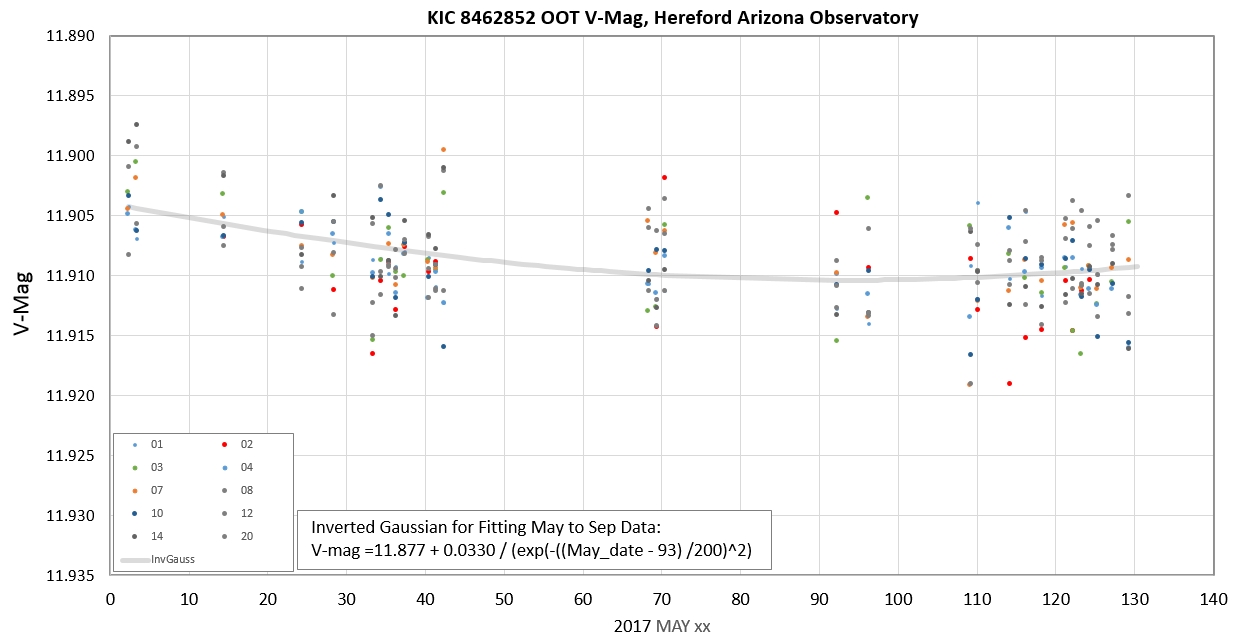
Figure 1. Final plot of long-term variation of TS OOT
V-mags based on the 10 best-behaved reference stars. The model is
a fit for only the 4-months of data from 2107 May to Sep.
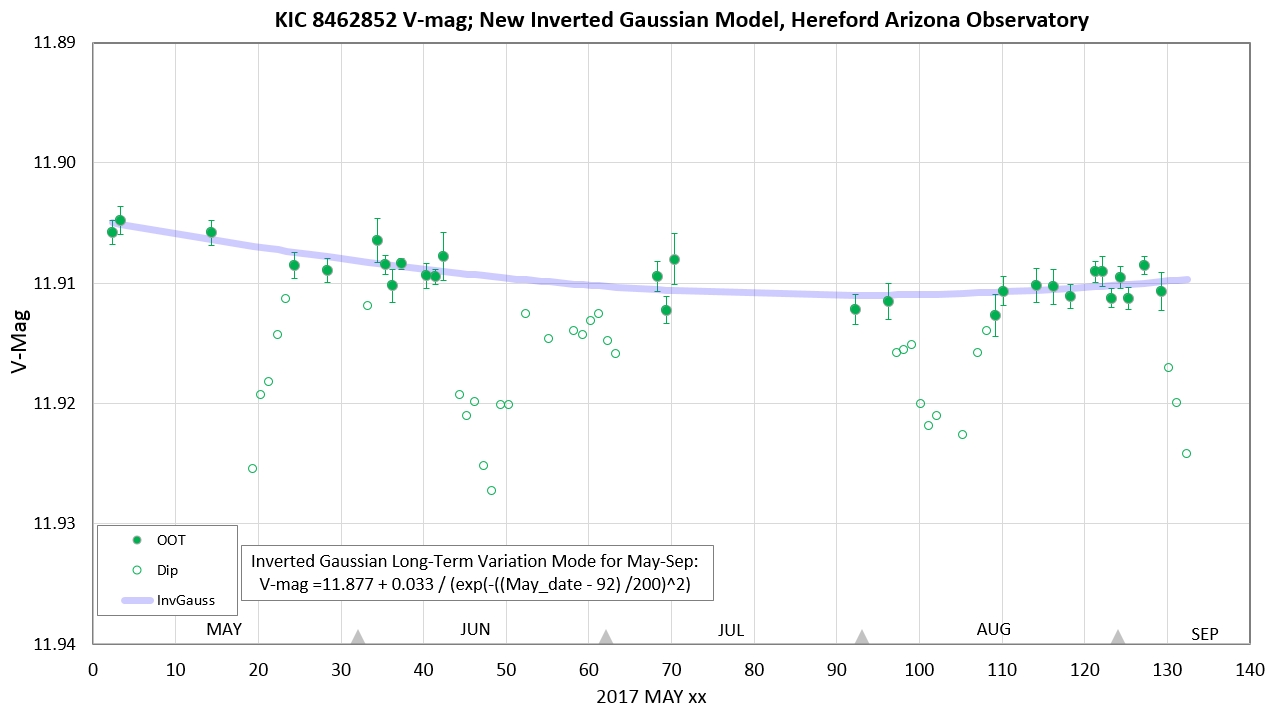
Figure 2. Average of all TS V-mags (OOT and dips) vs
date for 2017 May to Sep.
Reference Star List
The following 25 stars were included in my all-sky photometry
measurements, and subsets of these have been adopted for
calibration since 2015, when my long-term monitoring observations
began. Four of them were found to be unusable either due to their
extreme redness or "noisiness" (5, 13, 19 & 22). Three more
have been deemed undesirable based on their slow, long-term
(linear) drift (6, 14 & 20). I have discontinued using
them.

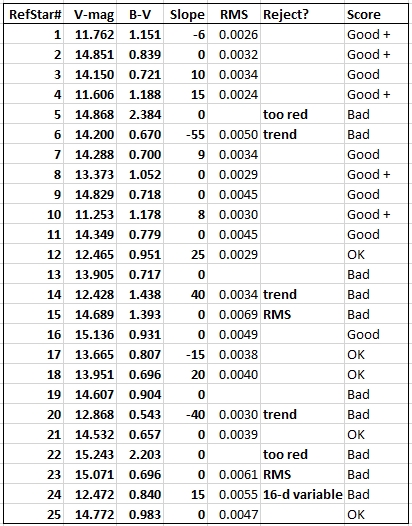
Figure 3. Finder image, with reference stars numbered.
North up, east left. FOV = 14.0x9.4 'arc. Table on right
summarizes the properties of each star used for either accepting
or rejecting a candidate reference star for use. [Choose a wide
screen view to see the table next to the image.]
The "score" values in the above table are based on redness,
variability and trend. There are 10 stars with a "Good" score. The
variability properties are shown in the next graph.

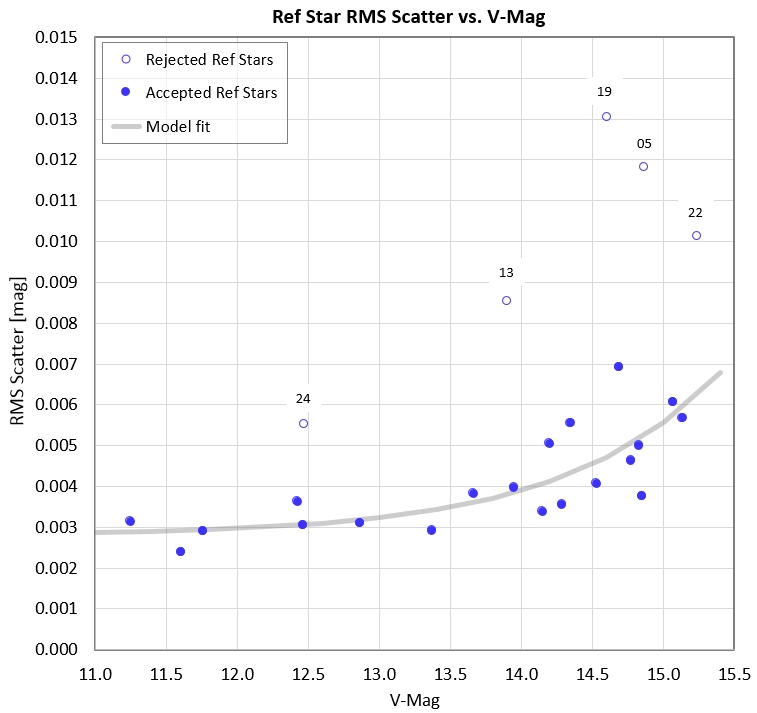
Figure 4. RMS scatter vs. V-mag for all candidate
reference stars. The 5 stars rejected for their variability are
labeled in the right panel.
I want to thank Tabby for pointing out to me (2016 December 11) that
Star#24 appears in Kepler data to be a periodic (rotational)
variable (with a 16.3-day period, full amplitude of 8.4 mmag). I
also want to thank Rafik Bourne for independently notifying me (2017
September 09) that Star#24 is variable in Kepler data at about the
1% level (actually, 0.77 % peak-to-peak variation). I had neglected
to reject Star#24 from use last year based on Tabby's warning - no
excuses.
The trend properties are shown in the following graphs.
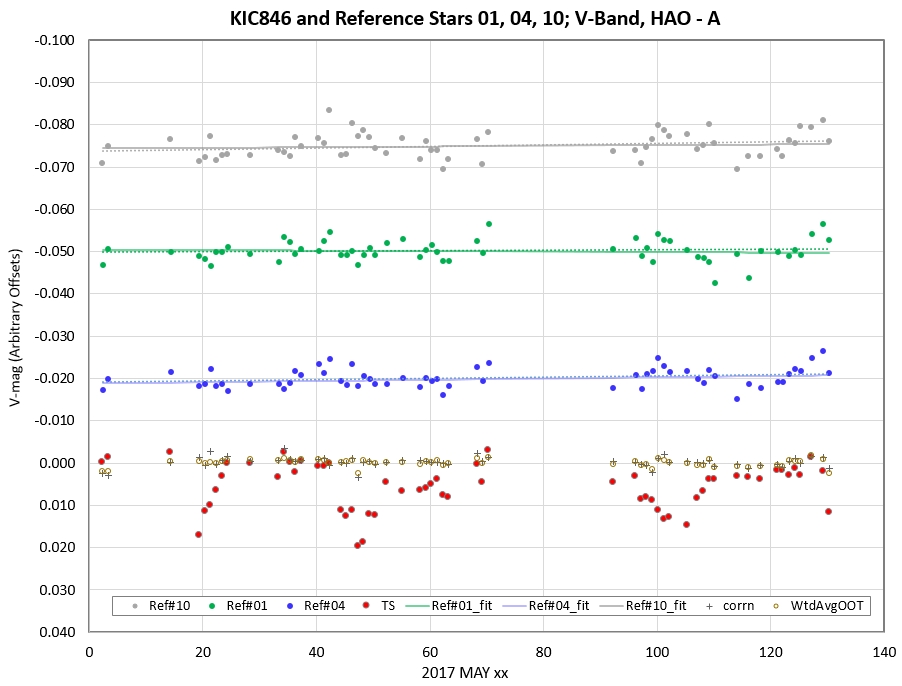
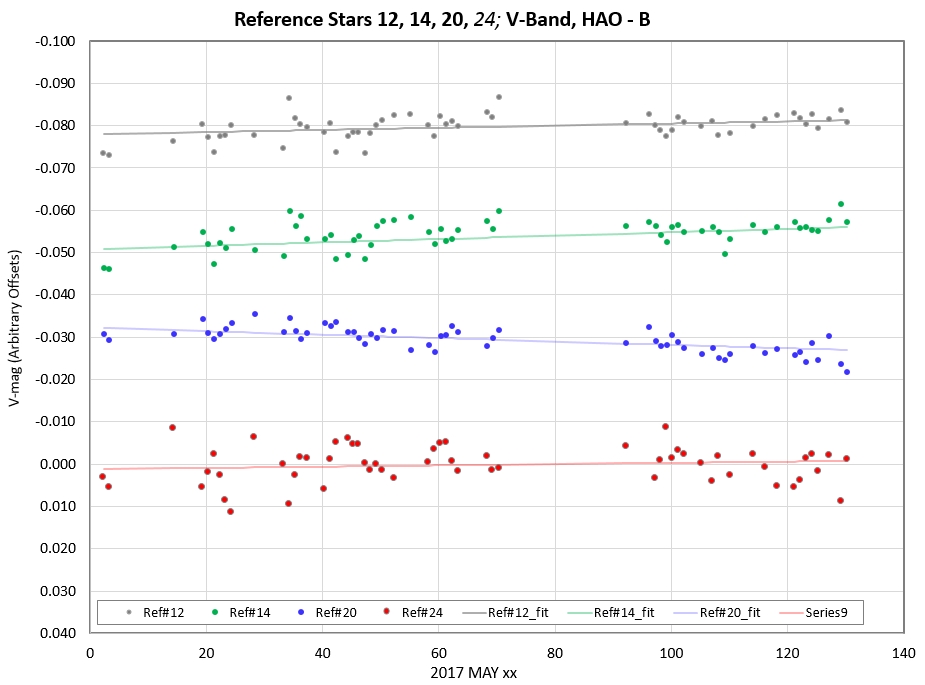
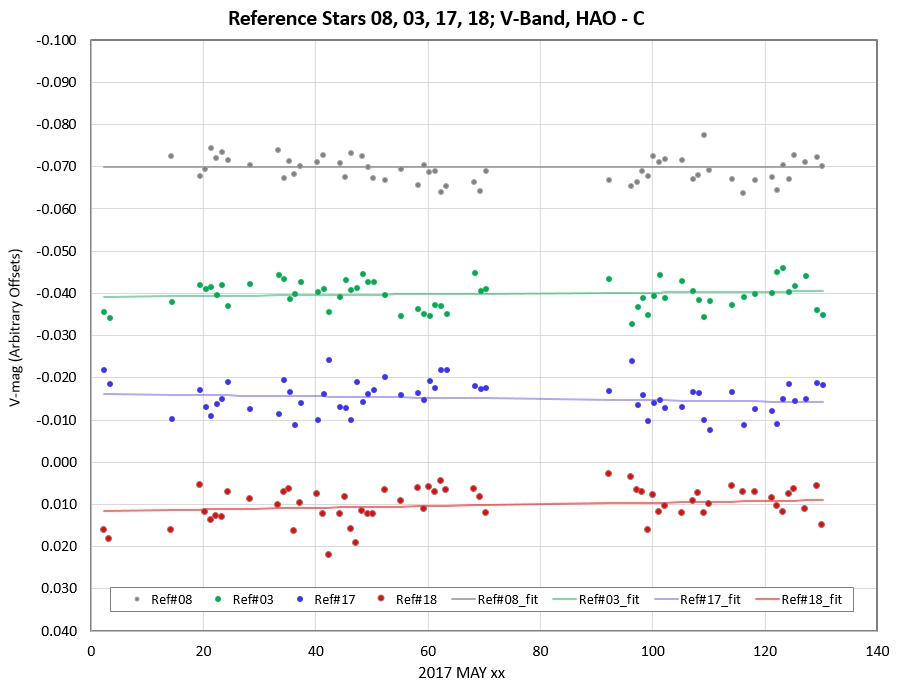
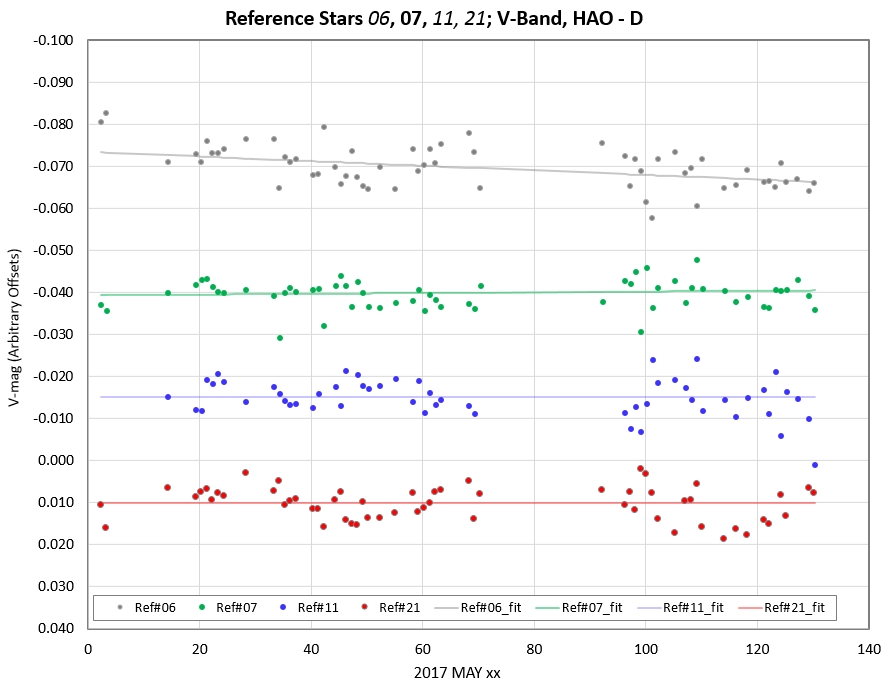
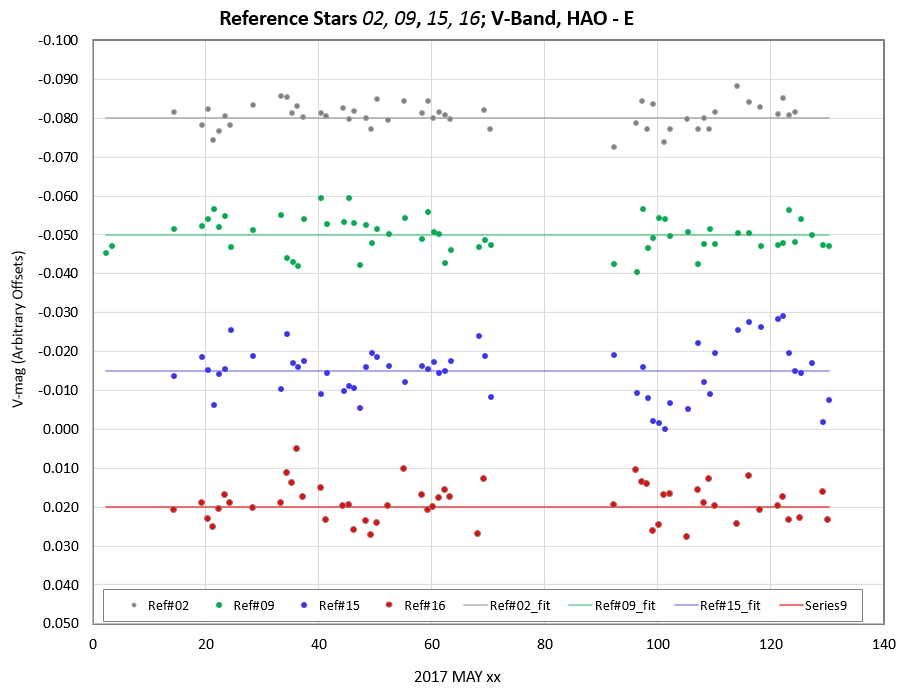
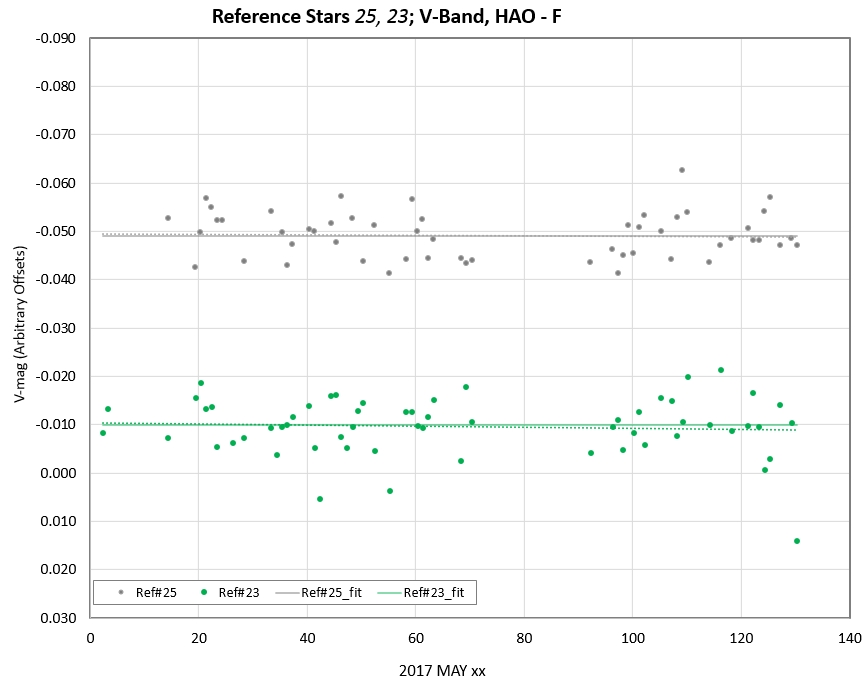
Figure 5. Panels A through F show V-mag vs. date for
selections of candidate reference stars. Arbitrary offsets have
been added to each star's V-mag.

wikipedia
description of HAO
Return to calling web page (ts3).
________________________________________________________________
This site opened: 2017.09.07. Nothing on this web page is copyrighted.













![]()